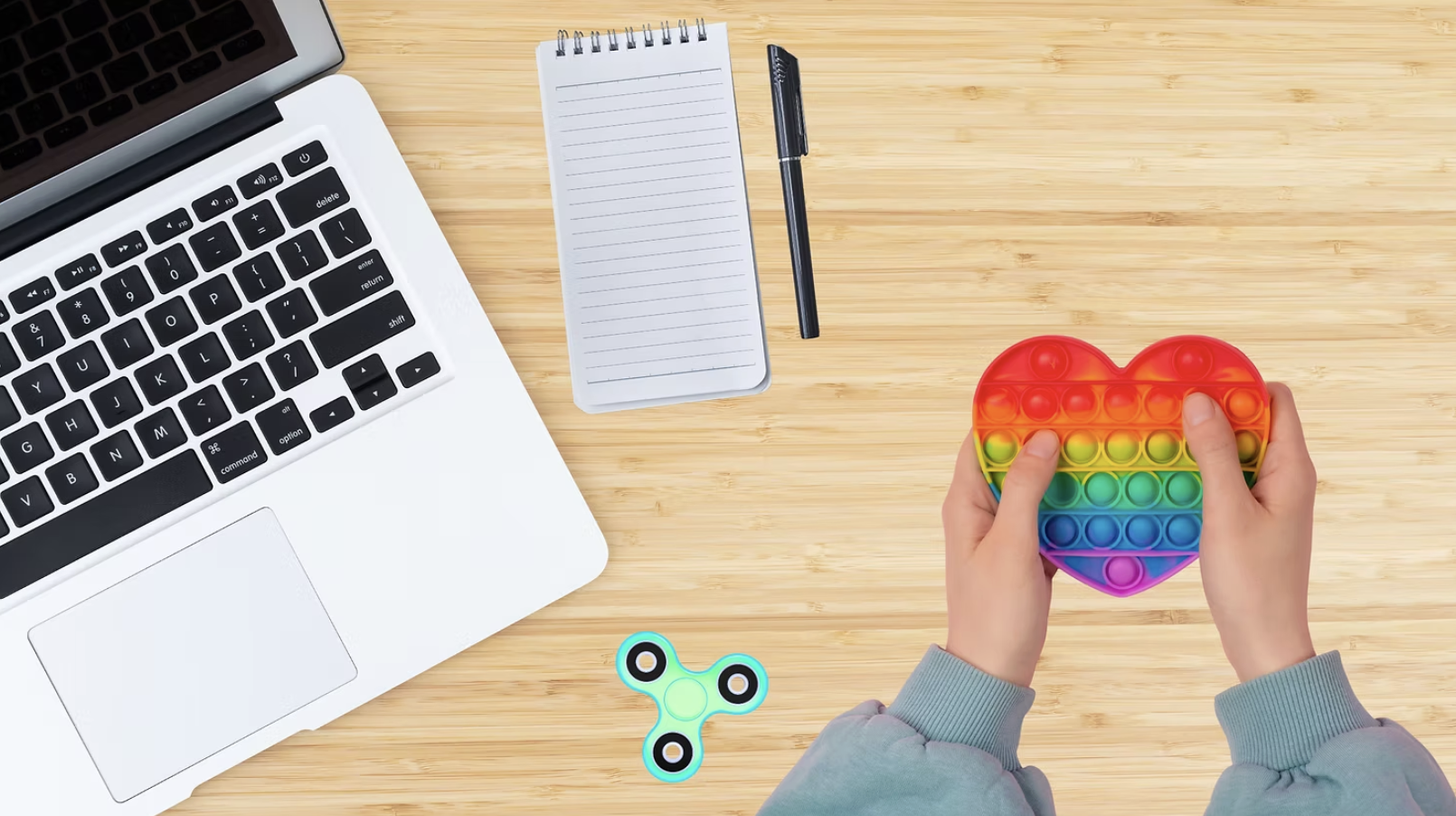The Power of Fidgeting - Part One
“Sit down, pay attention, sit quietly, look at me, empty your hands, stop bouncing your leg, are you even listening???”
How many times have we heard this? Many people assume that movement or fidgeting means a person is distracted and not paying attention. But what if that person with ADHD was moving in order to pay attention?
For individuals with ADHD, movement is often a way to stay focused and provide the brain with much-needed stimulation. Fidgeting isn’t a distraction—it’s a helpful tool for staying on task, especially during repetitive or boring activities.
“Multiple studies have found that children with ADHD are more likely to fidget or seek out other forms of stimulation in environments that have little or no stimulation.”
– Rachel Green
What Is Fidgeting?
Fidgeting is a sensory-motor activity, such as:
Turning a spinner ring while listening in class.
Rolling a tennis ball under your foot during a meeting.
Rocking in a chair while reading.
Fidgeting works because it doesn’t require visual or auditory focus. It allows a person to engage with a task while providing the sensory input their brain craves. For example, some students may find they can better comprehend audiobooks while pacing or rocking in a chair.
However, fidgeting should not compete with the primary task. For instance, listening to music through earbuds while attending a lecture would interfere with the ability to hear the speaker.
Why Is Fidgeting Helpful for People with ADHD?
Fidgeting helps individuals with ADHD regulate themselves. Research shows that the body and brain are deeply connected—movement impacts the brain just as the brain impacts the body.
In his book Spark, John Ratey, M.D., explains how exercise and movement, including fidgeting, can increase essential brain chemicals such as dopamine and norepinephrine. These chemicals help improve focus and attention in ways similar to ADHD medications.
Sydney Zendall, Ph.D., author of ADHD and Education, found that children with ADHD often experience wandering attention due to repetitive or unengaging tasks. Movement becomes a natural response to manage and make the task more interesting.
The Moving Brain Is the Working Brain
Here’s an example: One of my clients, an elementary student, was highly auditory. He would listen in class while making origami figures. His teacher, assuming he wasn’t paying attention, would call on him—but he always had the right answer! For him, movement helped him focus on the lesson.
While neurotypical people often focus on one task at a time, adults and children with ADHD tend to work better when they can move.
Fidget to Focus
In the book Fidget to Focus, authors Roland Rotz, Ph.D., and Sarah Wright share real-life stories of how movement increases productivity:
A woman with dyslexia improved her listening speed for recorded textbooks by playing a video game with the sound off. The tactile input of the game controller helped her focus.
Fidgeting is not just useful—it’s transformative for people with ADHD.
Fidgeting Helps!
In my sessions with clients, I rarely see anyone sitting still. Many use rocking chairs, chew gum, toss balls, pace, crochet, knit or even paint during our conversations. Despite their movement, they actively listen and thoughtfully respond.
Fidgeting provides sensory stimulation, which gives the ADHD brain the stimulation it craves. This, in turn, increases focus and self-regulation.
Try Fidgeting for Yourself
Fidgeting is a powerful tool for people with ADHD. It allows them to self-regulate, focus and stay engaged.
Click here for a free discovery session to explore how fidgeting can work for you!
Stay Tuned!
In the next blog post, we’ll explore the types of fidgets that work best and the do’s and don’ts of fidgeting.
Resources
The Body-Brain Connection: How Fidgeting Sharpens Focus – Roland Rotz, Ph.D., Sarah D. Wright, ADDitude
Fidget to Focus – Roland Rotz, Ph.D., Sarah D. Wright, Amazon
Fidgeting in ADHD – Rachel Green, Verywell Mind
Using Fidgets to Help Children with ADHD – SSM Health Treffert Center, SSM Health
Why Do I Fidget So Much? 11 Strategies for Managing ADHD Restlessness – Rebekah Pierce, The Skills Advocate
Spark – John Ratey, M.D., Amazon
ADHD in Education – Sydney Zendall, Ph.D., Amazon

